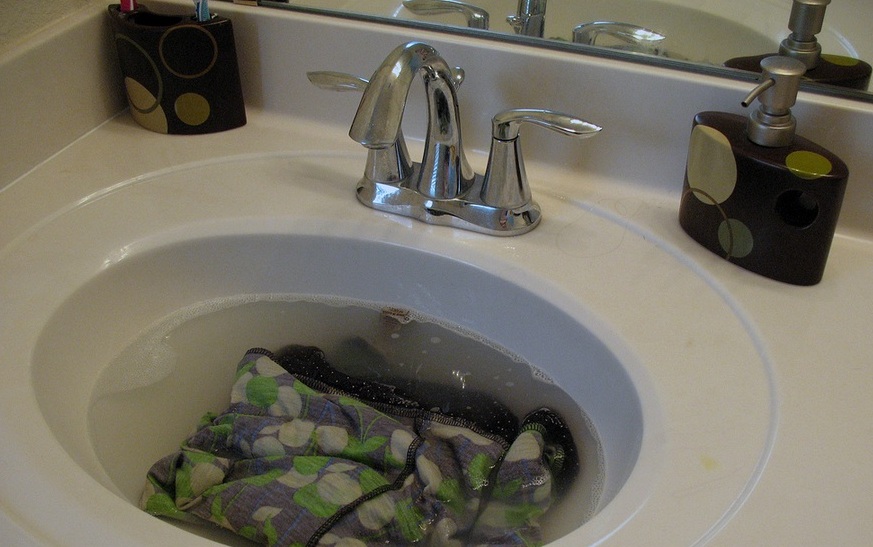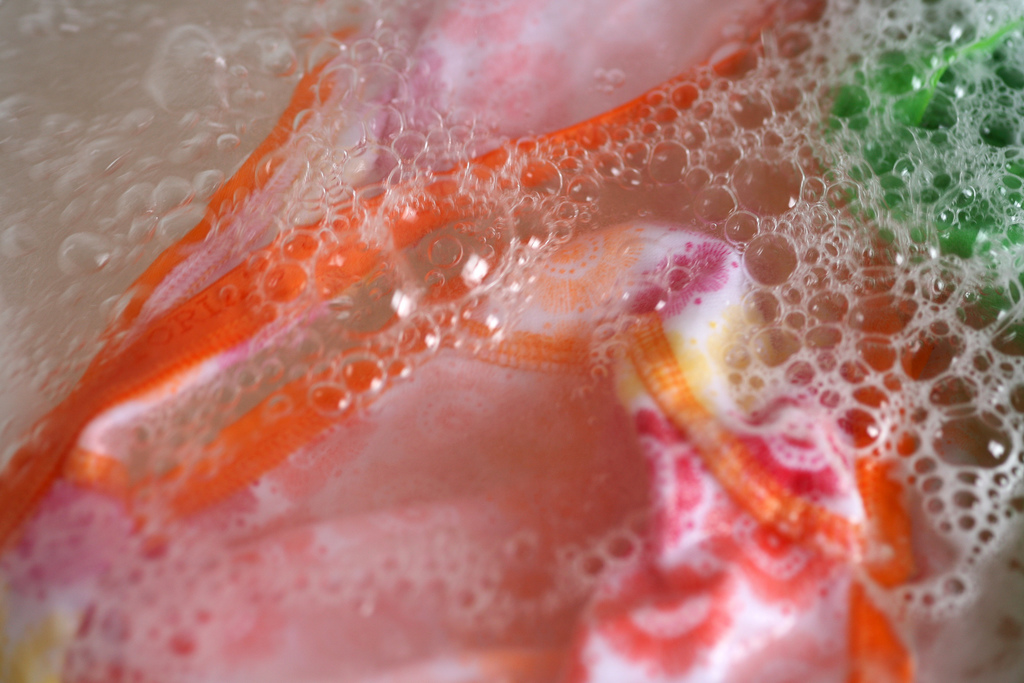
There’s one thing we all hate more than the clothing label “dry clean only”. Yes, the “hand wash only” label. How should you do the washing? Should you use soap? If yes, how much? What happens if you make a mistake?
Ah, millions of questions. Although hand washing seems complicated, it’s actually pretty straightforward – of course, only if you have the right instructions.
This type of washing is especially recommended for fabrics that will discolor, lose their shape, or shrink during a cycle of machine washing. Same as with the machine washing, you should sort the clothes by color because you can’t wash whites with dark colors; you need to wash them separately.
Things you will need
- Tub or sink
- Water
- Laundry detergent
- Towels
- Stain pretreatment (if needed)

Hand washing procedure
- The first thing you need to do is fill the tub/sink with water. The instructions on the label of the clothing you need to wash should specify the appropriate temperature, but in most cases, delicate fabrics are washed in cold or warm-to-the-touch water.
- Next, you need to add your favorite laundry detergent. Again, you should read the instructions on the label in order to put the appropriate amount of detergent. The detergent should be completely dissolved in the water before you immerse your clothes in the wash solution. Add the clothes and leave them to soak for a while.
– Tip: If your skin is too sensitive, don’t keep your hands in the solution for too long. Wash and dry your hands immediately after putting the clothes in the wash solution.
- In general, there are two methods for doing the washing procedure: you can either mix your clothes with your hands, or you can do the mixing with a pole. Whatever you choose, you need to move the clothes around so that they can loosen up grime and dirt. Washboards or other washing tools can be of a lot of help here.
- Oftentimes, some of the clothes need a little bit more washing care. Dirty work clothes, for example, have a dirty buildup that must be thoroughly cleaned by rubbing the fabric with a little extra detergent.
- Next, you need to rinse the clothes in order to get off the dirt and soap. You will need a bucket filled with clean water where you will move the clothes around to get the old water off of them.
- Remove the excess water because you can’t hang clothes to dry if they’re sopping wet. Make sure you’re not wringing nor twisting the fabric too much; gently squeeze out the water.
- Lay out a dry and clean bath towel and lay the washed clothing piece on it. Roll up the towel and gently press on it in order to encourage water absorption.
- Remove the garment from the towel and hang it to dry. If the care instructions say that it’s safe for the garment to be placed in a dryer, then feel free to dry them in the dryer.
We’re living a busy life and it seems like we don’t have time for doing hand washing, but keep in mind that hand washing is what keeps your clothes looking as good as new. Simply put, this type of washing is actually the best way to prolong the lifetime of your clothes.
